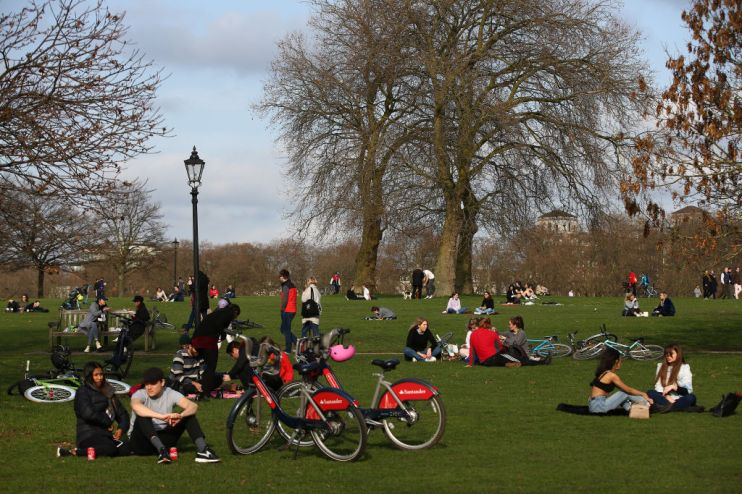UK R rate increases slightly to between 0.6 and 0.9

The UK’s R rate has increased slightly to sit between 0.6 and 0.9 but remains below the crucial 1 threshold, latest official data showed.
The figure marks a marginal hike from last week, when scientists estimated that the R rate was between 0.6 and 0.8. The new R rate means that every 10 people infected will infect between six and nine other people.
NHS data also showed the rate of reproduction of the virus increased across all regions in England, including London.
London’s R rate now stands at a best estimate of 0.6 to 0.9, up from 0.6 to 0.8 last week. However the figure, which is the same across all English regions, is still below the crucial 1 mark, meaning the virus is in decline.
An R rate below 1 means transmission is low enough that the epidemic is shrinking, while an R rate greater than 1 suggests the outbreak is growing.
The current estimate for London means infections in the capital are slowing anywhere between three and seven per cent each day.
“While the epidemic continues to decrease nationally, there may be more variation in transmission locally within regions, with slower rates of decline in some areas and communities,” the Scientific Advisory Group for Emergencies (Sage) said alongside the figures.
“These estimates are based on the latest data, available up to 15 March, including hospitalisations and deaths as well as symptomatic testing and prevalence studies,” they added.
The increase on the rate of infection across the country comes as all school and college peoples returned to classrooms last Monday after months of homeschooling.
Schools reopened fully in England on 8 March, while a phased return of pupils to classrooms has taken place in Wales and Scotland since 22 February, where most older pupils are not back in school yet.
One in 1,369 school-aged children in the UK are thought to have had symptomatic Covid last week, according to the ZOE Symptom Tracker app data, analysed by researchers at King’s College London (KCL).
Professor Chris Whitty, England’s chief medical officer, has repeatedly stated that the government will assess the impact of reopening schools on coronavirus rates in deciding whether to proceed with the current roadmap for lifting lockdown.
The figures will come as a major boost for the Prime Minister’s plans for the next phase of reopening, due to take place in just 10 days’ time.
Groups of up to six people will be allowed to meet in gardens from 29 March under Boris Johnson’s roadmap for exiting lockdown, alongside the resumption of outdoor organised sport.
Separate data from the Office for National Statistics (ONS) published this afternoon showed that the prevalence of coronavirus continues to plummet across the country, with an estimated one in 340 people in private households in England thought to have been infected last week.
The figure marks a sharp drop from the previous week, when one in 270 people were thought to have contracted Covid-19.